The LDS church rolled out some big changes to their child abuse prevention procedures today. Reactions seem to be positive, as seen across progressive Mormon discussion boards and social media alike is the phrase, “It’s a good step forward” coupled with celebratory attitudes of the good news.
These responses come with their caveats; the most popular one I’m seeing right now is, “It is NOT enough.”
Is it a step forward? Is it enough? As a Registered Nurse who specializes in Community Health, emphasizing child and family mental health and also aiming to encompass trauma-informed care within my practice, I have some thoughts. Actually I have a lot of thoughts. I also have hundreds of hours of mental health, abuse, and trauma training to compare this particular training to. I decided to break it down in a list of pro’s and con’s that I composed after taking the new child abuse prevention training.
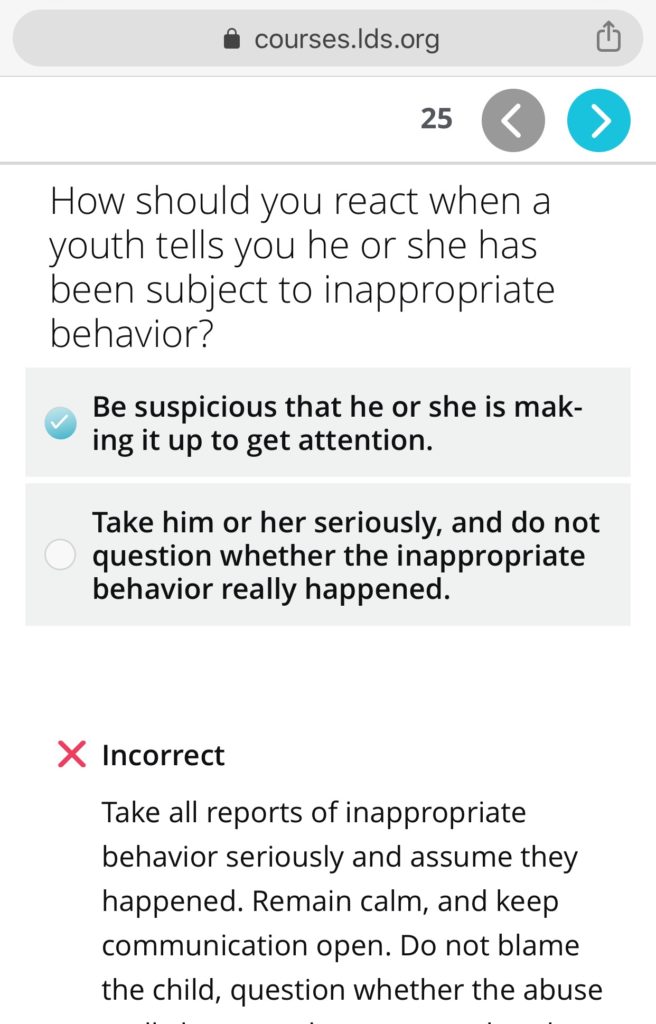
The Pro’s:
- The church seems to be living up to it’s ethically responsibility to use its incredibly far-reaching platform to spread important information on abuse that can be of benefit to all members.
- The church seems to be drawing even more attention to the fact that it has an abuse problem that needs to be addressed by using this updated abuse training as an opportunity for positive publicity.
- The church seems to be attempting to normalize the conversation surrounding abuse prevention and what to do in these situations within Mormon culture.
- The training identifies other types of abuse, not just physical or sexual, but also bullying, harassment, coercion, grooming, emotional and verbal abuse and neglect.
- The training appears to attempt to educate members on the importance of positive emotional health for children, as it addresses negative and punitive discipline measures like spanking, shaming, and humiliation, correctly labeling these things as abusive.
- The two-deep policy was reiterated and highlighted for all members. (Important to note as a CON: Bishops, Stake Presidents seem to exempt from this policy. )
- This is getting closer to having a widespread, collectively known policy that incorporates bystander training, encouraged every member to know the standards and watch for violations.
- The training is somewhat culturally-competent and easy to read with multiple choice questions that have only 2 answers to choose from. No information yet on if it is translated into languages and why there are separate instructions for U.S. and Canadian members.
- Members are instructed to report abuse to proper legal authorities (and their bishop).
- Everyone is invited to take the training. They just need to be a member first.
The Con’s:
- The training was created internally by the church itself, an organization which has been accused of covering up abuse within their ranks.
- The training is surface-level and generic. It does not cover the topic of this importance in an in-depth way or comprehensive manner.
- The training is only 30 minutes long. It can be easily clicked through and completed in even less time than that.
- No facts or statistics on child abuse were given in the training at all. No background information was covered on the issue.
- No mention of normalizing this discussion in church lessons, member inservices, auxillary meetings, or 5th Sunday lessons.
- No mention of teaching or incorporating lessons on the red flags of abuse to children and youth within the church. They need to know these policies too, but this need appears to be overlooked.
- Still no requirement of background checks for volunteers of even church leaders. No mention of how the church identifies or keeps track of abusive members.
- The training makes MULTIPLE mentions of the directive for Priesthood leaders, such as bishops, to call the Abuse Helpline of the church in cases where child abuse has been identified.
- The Abuse Helpline number is NOT widely available for all members or even any female leaders. (We have those don’t we?)
- The training seems to double down on the gaslighting that the mysterious Abuse Helpline, made only available for MALE PRIESTHOOD LEADERS, is actually helping these situations when in reality it has been well-documented that it goes to the church’s legal department whose foremost objective is to protect the church’s interest first.
- The training leans on the assumption that bishops have some sort of unspoken immunity, known in Mormon culture as ‘the mantle’, to not be abusive or abusers themselves. This is not true of course, nor is it responsible or ethical to perpetuate a false sense of security among church members.
- The training does not address one-on-one interviews or the sexually explicit questioning that IS happening with church leaders everywhere.
- The training does not offer any guidance of what to do if a priesthood leader IS the abuser. Members are instructed to report any case of identified abuse to the bishop, but what happens if the abuser IS the bishop?
- No mention on any recourse for members who experience or have knowledge of a bishop or church leader who fails to follow and abide by the directives given in the training.
The Questions:
I also have a whole list of questions that remain. Were any professional organizations consulted during the creation of this training? If so, which ones? Why is there STILL a helpline being used and why ON EARTH is it still only for bishops to use? What measures are being taken to address situations where the leader IS the abuser? What is the policy for members to report an abusive leader? Why is the church not using one of the several abuse prevention trainings that already exist through various organizations in an effort to remain unbiased on this sensitive and important issue?
Why are leaders STILL permitted to meet one-on-one with a child? Why are the basic principles of trauma-informed care not only not being implemented but being blatantly ignored? Why are members instructed to report all cases of suspected abuse to their bishop in addition to the legal authorities? How can the church assume bishops are always ethical and responsible people who do not abuse their power? Why can’t this training but done as a lesson in church with everyone? Why are we celebrating baby steps when we should be making giant strides in this area?
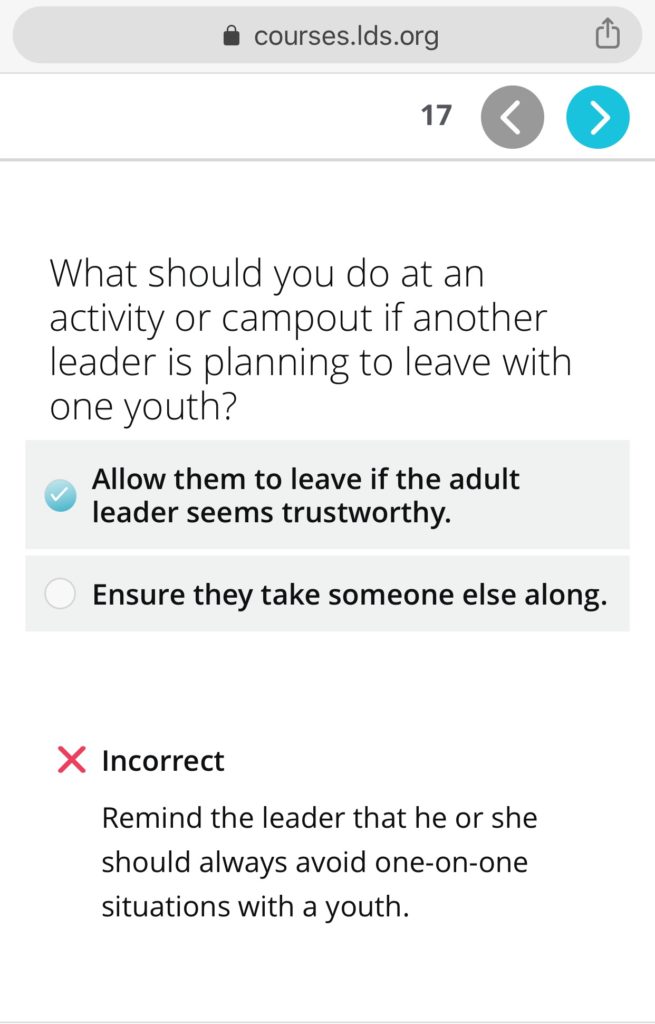
Are These Changes Enough?
Afterall, are we not a people of vision, hope, prophesy, and resilience? We have access to the best and the brightest of professionals on this topic. But we are not seeing openness and honesty about who helped with this effort.
We have a strong oral tradition of sharing stories of the impact of trauma on our ancestors and the reasons they sought out change and advocated for improvement of their situations. But we are failing to implement policies and measures that respect and address these histories of trauma.
We have unlimited funds at our fingertips that could not serve a better purpose than to educate people all over the world about abuse in an ethically responsible manner. But instead we wonder where our donations and tithes are going.
We have seen the horrors that exist when the systems and policies go terribly wrong and the irreparable and unimaginable harm that is enacted on the most innocent. But we fail to protect them.
So, are these changes enough?
No. It is not enough.
Not even close.


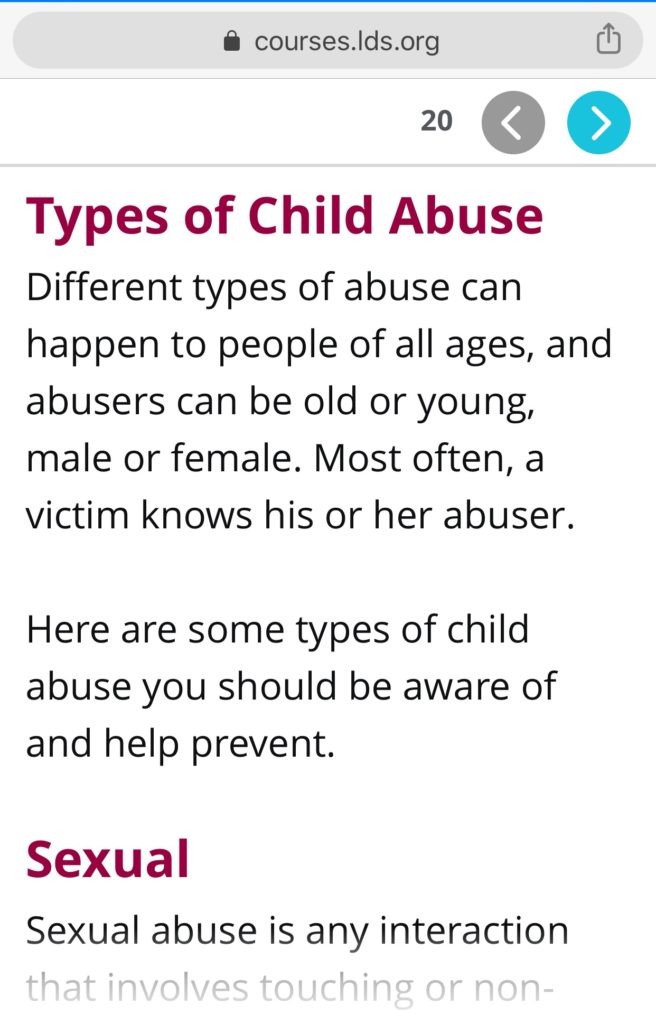
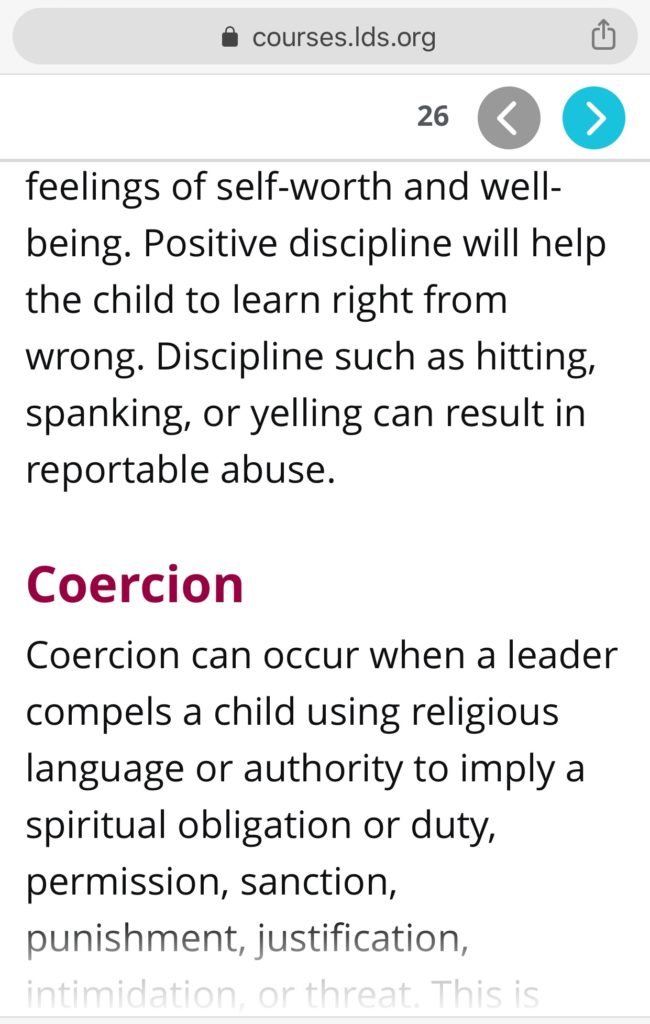
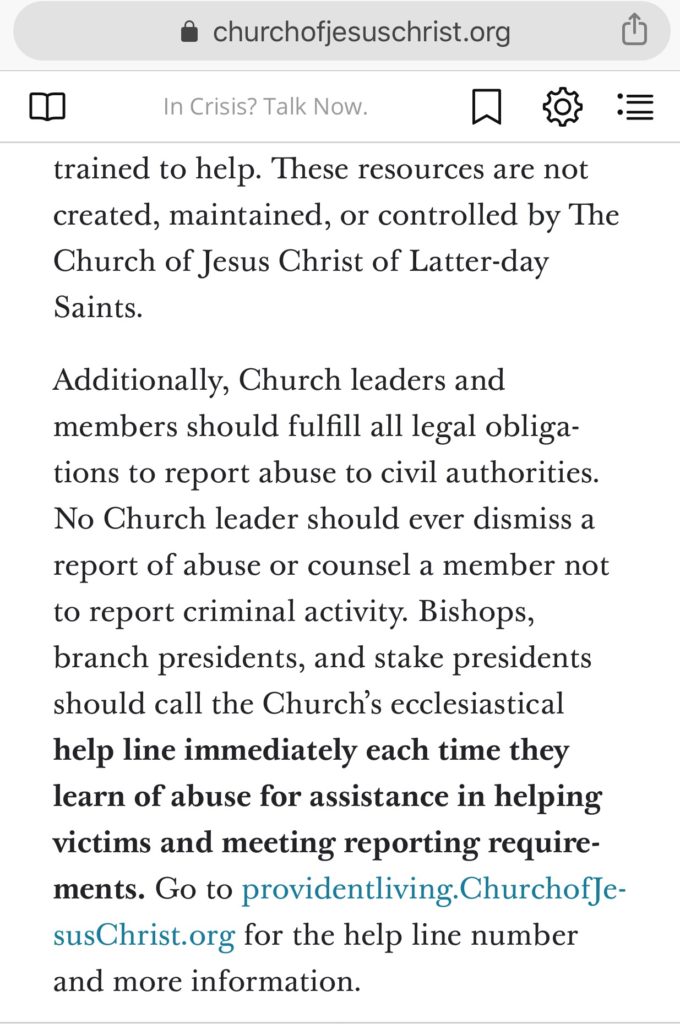




A very sensitive subject. I’d like to know how the church Leaders and its members feel about this training being enforce. I see the urgent need to educate people especially members to be biased towards this issue. It does hit home. I guess some of us fail badly when it comes to abusing our own loved ones. This subject has to be to be acknowledged. Awareness of the severity of the problem should be put in place to ensure that the our loved ones are protected. My heart aches when I was reading this article. It is definitely an eye opener. Thanks for sharing